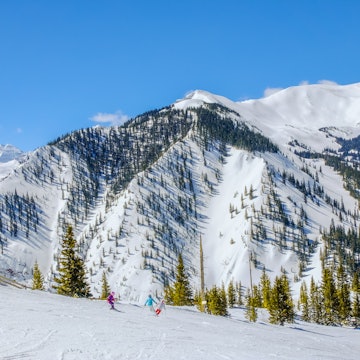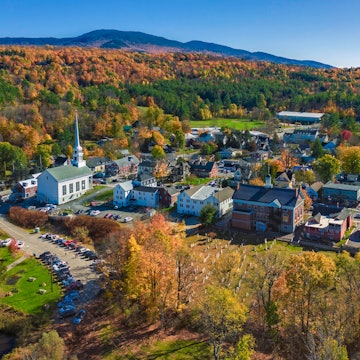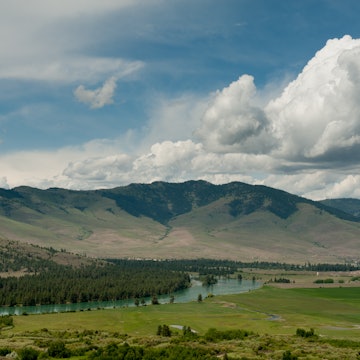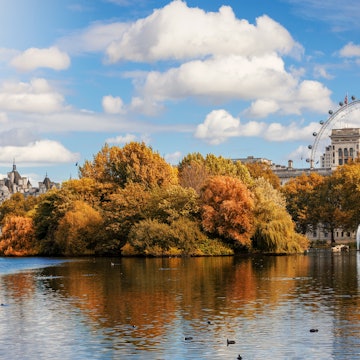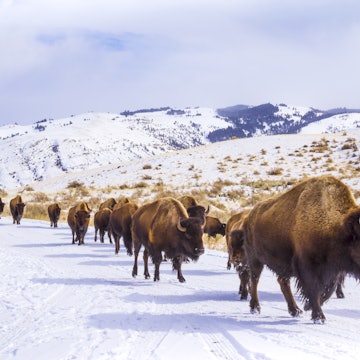

The wildflower-rich meadows surrounding Amfiteatrul Transilvania contain about 200 species of plant © James Kay / Lonely Planet
As darkness descends in Romania’s Făgăraș Mountains and we contemplate closing the curtains of the hide, a brown bear with an impeccable sense of drama appears, treating its audience to a late, late show. Half the size of a full-grown adult but still big enough to make me grateful for the pane of glass between us, it wanders the clearing in the forest, snout alternately lowered to the wet soil or raised to the cool air.

Moments after our first visitor disappears into the deepening gloom, a second arrives with a flourish. The stag comes closer, the branching crown of his antlers bowed to the rain-sodden earth just a few metres away. He’s still there – invisible but for a patch of white fur – when we surrender to the failing light, lower our binoculars and retire for a midnight supper.
If the evening’s wildlife watching is a lesson in how to build tension, the morning after is rush hour in the Carpathians of Transylvania. While the dawn chorus builds to a climax, we see two more bears – one large, one small – and a wild boar as stout as a pygmy hippo pass through this crossroads of secret, scent-laden thoroughfares.

Bumping back down the unmetalled road to civilisation a few hours later, we meet a logger’s tractor blocking the way. With a roar, it shunts splintered trunks of spruce out of the road. As we pass, the sight of all that timber, and the mountainside from which it came, now evokes a feeling of disgust.
'The last places that are wild and have these beautiful animals become so valuable that we have to protect them for all of Europe,' says our host Christoph Promberger, acknowledging his adversary in the tractor with a nod as he slip-slides his Izuzu pickup down the upper Dâmboviţa Valley.
Romania is one of the continent’s last wild places: of the countries in the EU, it boasts the most virgin forest, the largest unfragmented forest, the highest level of biodiversity, and the most large carnivores – bears, lynx and wolves, the last of which lured Christoph here from his native Germany.

The fourth-generation forester, who grew up in what would become the Bavarian Forest National Park (Germany’s first national park), came to study wolves as part of a three-year research project. But he never left. Instead, three years became five. Five became ten. And, somewhere along the way, one became two.
'I first fell in love with the country, then with Christoph', says his Austrian-born wife Barbara, who also arrived as a student eager to see Dracula’s favourite canines (the Făgăraș aren’t so far from Bran Castle – reputedly, if tenuously, Bram Stoker’s model for the count’s home, and still Romania’s most popular tourist attraction).
After witnessing loggers plunder the natural riches of post-revolutionary Romania for many years, the Prombergers decided to act. They launched a fundraising campaign to create a wilderness reserve, which would safeguard a chunk of forest. But a visit from a potential donor, the Swiss-American billionaire Hansjörg Wyss, expanded their horizons. Literally.

Keen to make an impression, the Prombergers hired a helicopter to fly him over their target area. But halfway through the tour Wyss, who has recently pledged $1bn for conservation projects around the world, pointed to a distant line of mountains – the Făgăraș – and requested a side trip.
'It was unbelievable,' recalls Christoph, 'It was so wild – flying for over an hour and seeing nothing but forest, no houses. [Wyss] said that could be a European Yellowstone. We hadn’t thought that big.' The billionaire agreed to back them on two conditions: one, they super-size their ambitions; two, they secure support from other philanthropists.

They already had one on their side: Paul Lister, heir to the MFI fortune and a passionate conservationist, had met Christoph through a shared interest: wolves. Lister has been trying to reintroduce them to the Scottish Highlands as part of a rewilding project at his Alladale Wilderness Reserve, a 93-sq-km former sporting estate.
He introduced the couple to other philanthropists pouring their wealth into ‘natural capital’. In 2009, the Prombergers and this group launched the Foundation Conservation Carpathia (FCC), which has been purchasing or leasing private land, and acquiring the hunting rights, for a decade now. Lister also promotes the FCC through The European Nature Trust (TENT), a charity he founded that champions other innovative conservation projects in Spain and Italy, as well as Alladale.
'Most informed people realise humanity is facing a very real and growing environmental crisis,’ says Lister, 'so what better place to start than by helping to preserve Europe’s last pristine forests. Romania is the beating heart of our continent’s ecology and endangered landscapes.'
Thanks to such heavyweight support, the Prombergers have taken strides toward their revised, loftier goal: to establish a major new national park around the Făgăraș Mountains. So far, the FCC has brought 225 sq km under its control and established a hunting-free area of 360 sq km.

Restoring degraded areas of forest is an important part of the plan. Christophe takes us to a former clear-cut – an area stripped of every tree – that was replanted seven years ago. Loggers had laid the hillside bare, turning it into a dead zone of sawn-off stumps and poisoned streams.
'It was stinking, it was smelly, it was oily – it was a ‘ground zero’ sort of place,' he says, pushing through what is now a thicket of beech, alder, rowan, fir and mountain ash. A few yards in, we find fresh bear tracks in the soft, soggy ground, the paw prints framed by wild strawberries and forget-me-nots. 'The forest just came back to life.'
The FCC is aiming for a total of 500 sq km, which would form the core of a future park. At that point, the foundation would give the land to the government on the proviso that it enlarged the protected area to 2500 sq km, creating a haven for wildlife stretching from the Olt Valley to Piatra Craiului.

A wilderness this big, says the FCC, would rival a Yellowstone, Serengeti or Parque Nacional Torres del Paine, becoming a major attraction for the region. On an even grander scale, the Prombergers envision it as just the first in a chain of new parks stretching across the Carpathians, establishing a green swathe in the heart of Europe – a carbon sink for the entire continent.
A few years ago this might have sounded like sheer fantasy, but Christoph and Barbara believe there is a political mindshift underway, pointing to the ‘Green wave’ of MEPs winning seats in recent elections as voters become more and more concerned about climate change. In addition, some recent research suggests that large-scale forest restoration is the most effective strategy we have right now.
Raising funds is just one of the challenges, though – equally important is winning hearts and minds. After living through the battle to establish the Bavarian Forest National Park, Christoph knows how hard that can be. 'Locals were totally against [the idea of a national park],' he says. 'People who came from Munich to present it got beaten up.' Fast forward 50 years and it is now a national treasure.
Essentially, the FCC must persuade people that a park would give rise to a ‘green economy’, creating new jobs. Yellowstone, for example, attracts four million visitors a year, double the number of international visitors to Romania – and yet the latter has a far greater potential market, as 500 million Europeans live within a three-hour flight of Bucharest.

This year, for the first time, TENT is taking groups of travellers into the Făgăraș Mountains on a commercial basis to see the results of the FCC’s work. These ‘conservation journeys’ feature wildlife watching and partnerships with local entrepreneurs working to expand their offerings in a sustainable way.
A stop on the TENT trips, Amfiteatrul Transilvania feels like an early example of what’s possible for forward-thinking businesses. Lying between the limestone ridge of Piatra Craiului and the mountains of Bucegi National Park, this family-run operation features a restaurant and cottages surrounded by alpine meadows.
With an eco-friendly ethos that embraces not just the food but also the buildings (everything is made from local wood and stone), the restaurant is popular with day-trippers from nearby Braşov. But the ambition is greater. As well as renting out the cottages, the site hosts yoga courses and wellness retreats; now the owners plan to renovate the hay barns scattered among the wildflowers, creating more characterful places to stay.

According to Constantin Robu, who found this sublime hilltop spot on a hike 17 years ago, the meadows are a natural pharmacy where hundreds of medicinal plants flourish. But you don’t need to ingest any to feel a health benefit at Amfiteatrul: simply watching the tortoiseshells, swallowtails and fritillaries flit among the swaying carpet of orchids and bellflowers is a powerful form of therapy.
If the campaign to heal the Carpathians stalls, the forces that have shaped so much of Europe’s landscape – logging and farming – might tame these wild mountains. If, on the other hand, the Prombergers’ vision comes to pass, Romania might mature into a beacon of hope for those fighting to undo the damage to the natural world – a country where growing prosperity doesn’t cost the earth.
James Kay travelled to Romania with support from Wizz Air and TENT. Lonely Planet contributors do not accept freebies in exchange for positive coverage.





